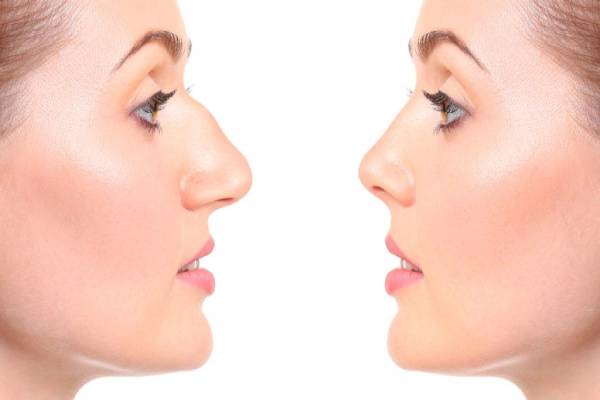Table of Contents
Preface:
Nose job, commonly known as Rhinoplasty, is a method of plastic surgery to change the nose shape and Nasal reconstruction. Rhinoplasty is done for two purposes – reconstructive surgery, which restores the shape of the nose, and cosmetic surgery, which changes the appearance of the nose.
The size, shape, and symmetry of the nose contribute significantly to the beauty of the face, so it is understandable why rhinoplasty is one of the most popular cosmetic procedures performed today. Various factors are associated with success rates and complications after rhinoplasty.
The skin is the largest and fastest-growing organ in the human body. However, in some people, it can grow very quickly, which is caused by a condition called scleroderma. Although the cause of this disease is unknown, experts say that it leads to excessive production of collagen in the body.
In general, there are 4 main skin types: normal, dry, oily, and combination. However, each person’s skin balance varies depending on age, health, and lifestyle, hormonal changes, stress levels, etc., so skin characteristics can change at different stages of life.
Normal skin
This skin is neither too dry nor too oily. This regular texture is flawless and has a neat and soft appearance and does not require special care.
Sensitive Skin
Sensitive skin is more prone to react to stimuli to which normal skin does not react. This skin type is brittle that is usually accompanied by discomforts such as heat, cramps, redness, or itching. This type of skin loses its barrier (or protective) function, facilitates the entry of microorganisms and irritants into it, and increases the risk of infection and allergic reactions.
This skin needs more care to deal with dryness, roughness, and its usual appearance. Sometimes, instead of being sensitive, it is also called irritated skin, but these terms are synonymous and there is no skin difference between them.
Dry skin
In many cases, dry skin is caused by external factors such as air, low humidity, and immersion in hot water and is usually temporary. However, for some people, dry skin may occur more often and may even be a lifelong condition.
Since dry skin can cause cracks and expose the skin to bacteria, although this is not generally a serious problem, it may cause other skin disorders such as eczema or, if not properly managed, cause infection exposure.
Signs and symptoms of dry skin may vary depending on various factors such as age, health status, or their causes. It is generally characterized by a feeling of tightness and roughness. It may also appear with graying, itching, redness, and small cracks of a gray color. Cracked skin is usually found on very dry skin and creates small cracks, which in more serious cases, may be deeper and even cause bleeding.

Oily skin
Oily skin looks porous, moist, and light. This is due to the overproduction of fat by the sebaceous glands and is usually determined by genetic or hormonal reasons. It affects adolescents and young adults under the age of 30 and is usually associated with acne.
Combination skin
In terms of placement, it shows the characteristics of dry and oily skin, because the distribution of sebaceous glands and sweat glands is not unmixed. The area with the most oil is usually the T-zone (forehead, nose, and chin), while the cheeks are normal or dry.
The skin color of the people of the Middle East is very olive-ish. This means a darker color with a light yellow undertone in skin coloring. Having olive color skin means that they respond better to sunlight and are less likely to get a sunburn, but to protect the skin from brown spots and blemishes and of course, protect against skin cancer, it is necessary to always use sunscreen.
Some Asians have thick skin and worry about how rhinoplasty surgery will affect them. It’s their thick skin that protects it to some extent from skin problems.
A person with thick skin should have advanced cartilage regeneration to strengthen the cartilage to compensate for the sagging of thick skin.
For a better understanding, you can try this experiment: put your fingernail under the sleeve of a shirt or coat, and lift it until you see the nail is visible from the fabric.
The skin is also like a piece of cloth, the closer the cartilage is to the skin, it’s more visible, like a person’s nails. Therefore, you should talk to your surgeon about the need for a large protrusion, cartilage support for the tip of the nose and also an increase in the bridge of the nose that narrows the nasal bone.
How to identify thick nasal skin?
One of the easiest ways to tell if there is thin skin on a person’s nose is to look in the mirror and see if the edges of the cartilage at the tip of the nose are visible through the skin. If the edges are visible, your skin is thin. If the cartilage is not visible, the skin of the nose is thick./Restorative Rhinoplasty Surgery
Which is better, thin or thick skin of the nose?
Thin skin consists of four layers, while thick skin consists of five layers. This makes thin skin more prone to damage than thick skin.
Of course, having thicker skin on the nose also has benefits. Thick skin can hide more imperfections than thin skin, but some people with this type of skin should generally avoid rhinoplasty surgery if there is a bulge or a slight concavity. Thick, oily skin also ages more slowly than thin, dry skin and can often withstand sunlight with less damage.
What causes thickening of the skin?
Your skin is made up of many layers, the middle layer of which is called the dermis (the thick and fibrous tissue of the dermis made of collagen and elastin), which makes up 90% of the thickness of your skin. Dermis creates strength, flexibility, and elasticity of the skin.
What causes thickening of the skin of the nose?
Untreated rosacea (a condition called rosacea phymatous) can cause the skin to thicken and the nose to enlarge. Some surgical procedures can reduce the appearance of thickened skin.
Why is the tip of the nose round in some people?
Thick skin of tip of the nose is rounded. If the problem is not with the skin, the cartilage at the tip of the nose may be round. The nasal cartilage, will flatten the tip of the nose in a wide or convex shape.
Is the skin of the nose removed during rhinoplasty?
The skin of the nose is rarely removed during cosmetic surgery, even if the nose is much smaller.
What is thick rhinoplasty like?
Patients with thick noses have a significant subcutaneous fat layer under their skin that can hold swollen fluid (edema) for a long time. An experienced rhinoplasty surgeon can gently thin this subcutaneous layer so that the patient’s skin heals in a thicker skin with less oily skin.
What effect does thick skin have on rhinoplasty?
Thick skin is not only more prone to scarring, but it also takes longer for the swelling to subside. During rhinoplasty, changes in the bone and cartilage can eventually weaken the structure of the nose.
Does the skin of the nose shrink after rhinoplasty?
There is no need to worry because the skin has elasticity, which means that the skin shrinks after surgery. Contraction of the skin after rhinoplasty is usually better when the patient is young. The skin of elderly patients shrinks less due to poor elasticity.
The effect of thin skin on the outcome of rhinoplasty
Like thick nose skin, thin skin has its advantages and disadvantages in rhinoplasty. Patients with thin skin usually experience less swelling than patients with thicker skin. Also nose’ swelling goes away faster, and incisions are less likely to cause sores.
Thin skin can be as problematic as thick skin and requires special techniques to achieve great results. Also, the skin of the nose becomes thinner with each successive nose surgery, and a candidate for constructive rhinoplasty has a thinner soft tissue than before the initial nose surgery. Treatment of cartilage protrusion or enlargement of the tip of the nose is twice as common in patients with thin skin.
However, thin skin has less camouflage for the nasal skeleton beneath its layer. Despite the thin skin, even the slightest roughness can be seen on the bridge of the nose. Therefore, the biggest challenge in patients with very thin skin is performing a very careful operation and leaving a smooth bridge of the nose. In some cases, other materials (fascia, dermis, cartilage) can be transplanted or strengthen the thickness of the skin by injecting special materials.
Thin skin is more common in patients from northern European countries. Due to the number of rhinoplasty surgeries performed in Iran, this country is one of the best destinations for rhinoplasty surgery.
Most Iranians have nose thick skin, which is why Iranian doctors are expert of in performing rhinoplasty surgery for people with thick skin.
Moj Aramesh Amitis Company with the cooperation of its experienced doctors will bring the best results for dear patients.




